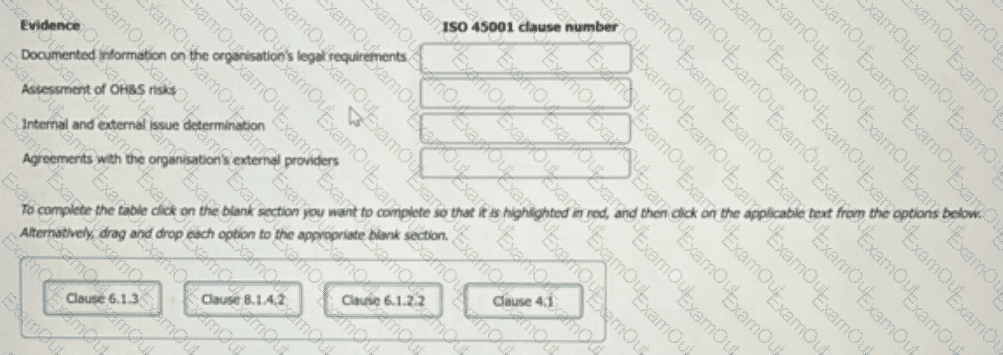Whistlekleen is a national dry cleaning and laundry organization with 50 shops. You are conducting an OHSMS surveillance audit of the head office and are sampling health and safety performance monitoring. You find that 80 per cent of incident originate from five shops in the same region. Most of these relate to staff and customer feeling unwell due to breathing in the pungent atmosphere. Some required to be hospitalized. The OHS Manager tells you that these are the oldest shops in the organization. The cleaning equipment emits Volatile Organic Compounds (VOCs) and needs replacing but the organisation cannot afford it at the moment.
You are an audit team leader overseeing the activity of a trainee auditor. Your team has just completed a surveillance audit and is assembling the final report.
The trainee has not contributed to a final report before and is clearly struggling with what she should provide to you for inclusion.
Which three of her following statements would be appropriate?
Select two options that are corrections.
Which one option defines what is to be achieved by an audit?
Which two of these statements about processes are true?
During an internal audit of an OHSMS, what evidence would the auditor look for to demonstrate conformity to ISO 45001? Match each item with the correct ISO 45001 clause number.

A well-known fast-food organisation (ISO 45001 certified) contracts young people to deliver orders; last week one of them died in a street accident riding for the first time a new motorbike provided by the organisation. You will lead the recertification audit in two weeks, and you plan to prepare a checklist to investigate this incident. The following are potential questions you might ask; match them to the related ISO 45001 clause/subclause.

Aitchandness inc, manufactures safety footwear and other items of personal protective equipment (PPE). The organisation applied for ISO 45001 certification, and after the initial certificate audit, the certificate body decided that the audit team leader should carry out a follow-up audit to determine whether the non-conformities could be closed out.
A major non-conformity was raised at Stage 2 because of inadequate storage and handling of chemical used in the production process. Minor non-conformities related to retaining documentation, staff safety training and inadequate testing of emergency procedures.
Select four of the actions which the auditor could take at the follow-up audit to determine the effectiveness of corrective action for the non-conformities.
An audit team leader arrives at a fabrication organisation that manufactures stairways to ..certification audit. At a meeting with the OHSMS Manager the audit finds that the responsibility for worker consultation and participation lies with the managerial team. Select from the options four actions by the managerial team that encourage worker consultation and participation.
You are the audit team leader of an ISO 45001 remote/space certification audit. Which two of the following topics would you need to discuss with the audit OHSMS legislation of the local authority, which has been


 A screenshot of a computer
Description automatically generated
A screenshot of a computer
Description automatically generated
 A screenshot of a computer
Description automatically generated
A screenshot of a computer
Description automatically generated